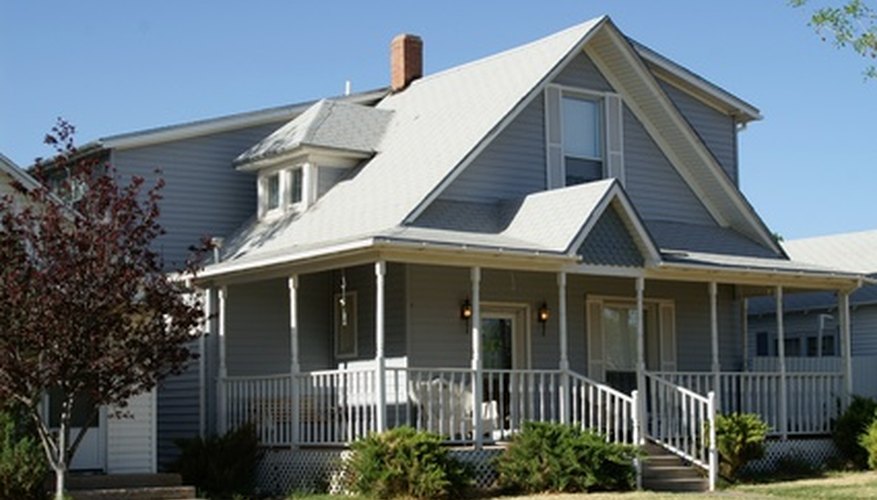If you build an addition to your house you will have to tie the addition's new roof into your existing roof. This is a challenging task that you should avoid if you do not have house construction experience and a lot of help. Since this project will involve structural elements of the house, it is wise to have an architect draw or at least approve plans for the project. You can join any styles of roof -- gable to gable, hip to hip, gable to hip, hip to gable, or shed to gable -- using similar techniques.
Plan your new roof connection depending on where it will be made. An extension of a roof, adding a roof to a gable end under an existing roof and connecting a perpendicular addition are projects that require different kinds of framing. For the first two types of projects, start by nailing a new truss to the end truss of the old roof or to the wall of the house. For a perpendicular addition, lift one truss in place and use it to mark spots for valley boards on the old roof to support new rafters and trusses. These will form a triangle on the roof.
- If you build an addition to your house you will have to tie the addition's new roof into your existing roof.
- For the first two types of projects, start by nailing a new truss to the end truss of the old roof or to the wall of the house.
Prepare the area for the roof connection by removing old roofing, siding or other elements. Remove these materials until you are down to the sheathing or framing of the old roof. For extensions, lift one truss into place and nail it to the last truss on the old roof or to the wall of the house (fastening to joists and studs) and to the cap of the new wall. For a perpendicular addition, nail two-inch by six-inch valley boards on the old roof, along the marked lines, then nail in place one truss. You will have to cut and nail in "jack" rafters of varying lengths between the valley boards and the ridge board on the new roof.
Add trusses down the length of the addition, spaced 24 inches apart. After the last truss is in place, nail on a ridge board, which will fit into slots in the top of the prefabricated rafters. Use a level to make sure all trusses are plumb as you fasten this board, which will tie all the trusses together. Double-check all nailing to make sure the trusses are solid. The last truss may have to be spaced less than 24 inches, to conform to four-foot by eight-foot sheathing, but it should be flush with the outside of the end wall.
- Prepare the area for the roof connection by removing old roofing, siding or other elements.
- After the last truss is in place, nail on a ridge board, which will fit into slots in the top of the prefabricated rafters.
Nail oriented strand board (OSB) decking over all the new rafters. Install bent metal flashing where the old and new roofs meet and on the peaks and metal drip edges along the eaves. Cover the roof with roofing paper, overlapping seams generously, then nail on shingles. Put siding on the new roof end, replacing any removed from the old roof area.
TIP
Lifting rafters requires at least four and up to eight people. Position one person along each wall with a two-inch by four-inch board notched to hold the rafter, and one person in the centre. Lift the rafter using the boards until a person on the roof can grab it, then move it upside down into position on the roof. Then have two people lift the rafter upright and hold it while a third person nails it to the wall caps and ceiling joists. A hip roof end will require different framing to slope toward the wall.
WARNING
Use extreme caution when working on a roof. Any helpers on the ground should wear hard hats.
